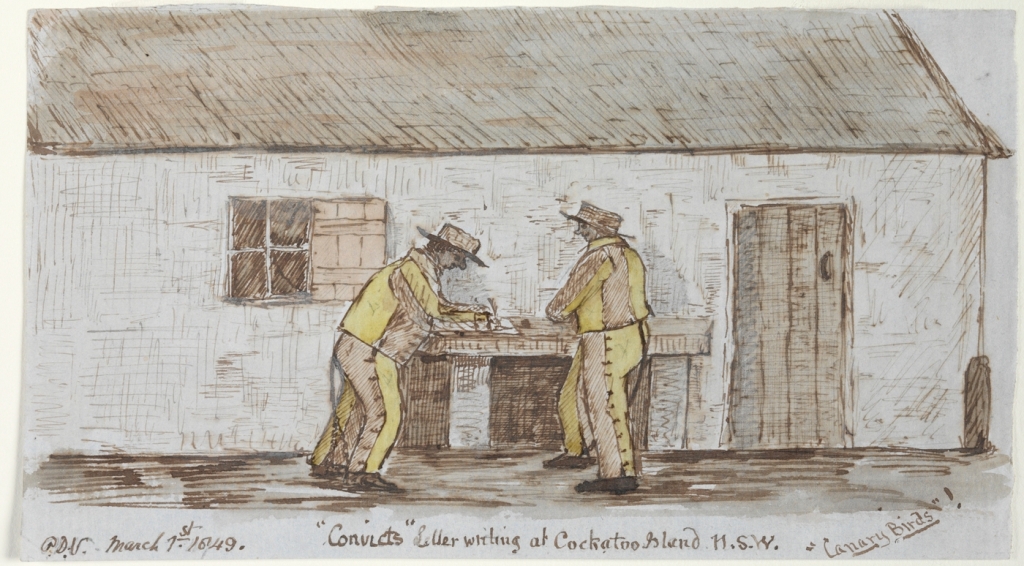Lucy Campbell
I was a chef for a while when I was younger, I started as a waitress and slowly made my way back into the kitchen, following my nose and my stomach. I loved cheffing, it fired my enthusiasm, creativity and my appreciation of a chaotic environment. I thrived in the manic, heated frenzy of a working kitchen: the sticky heat, the rich smells of seafood and the warmth of a freshly baked pastry. Food is very important to me and always has been. I am a qualified ‘foodie’.
My time spent in prison then, for me was something of a sensory journey through the realm of taste. In 2004 my partner and I were arrested for trafficking drugs across an international border and served four years in various Mexican prisons and three in the UK. The food was worlds apart in each of them. In Mexico, they offered three meals a day served in carts parked at the entrance to each wing. It was essentially three meals of slop. Greasy, watery caldos and rice with beans. Always rice and beans and always with chilli. Chilli in everything! It was tough for a woman who had never eaten chilli before to be immersed in a culture that ate chilli with everything. It took some acclimatising and painful episodes while my body accommodated the new diet. The children had chilli-flavoured lollipops and sweets were chilli flavour. Everything edible had a chilli kick, it was almost a religious sacrament. To deny the chilli was to deny the Mexican.
Prison life revolved around food, making food, buying food, waiting for food and getting food from family members. I measured the passing of time by the arrival of meals. Not many women ate the prison food, they didn’t need to. Family is a strong vibe in Mexico and so visit days were busy and smelled delicious. Families brought bags and bags of food in Tupperware, enough to last days. Gorgeous food, real Mexican food. Carnitas, Mole, Sopa de Pollo, fresh tortillas. I didn’t get visitors so I used to wait in my room and most days when the women came back from their families they would share plates of food with me. Mexicans are generous people, and they were delighted to share food with someone so (eventually) appreciative of their family’s cooking. It took me a while but I grew to love chillis, I grew to love the flavours of Mexico. Chillis, coriander, fresh, tangy salsas. I wrote recipes of my favourite meals in my diaries and still cook these recipes for my own family today.
We cooked in our cells on small electric pans and the corridors always smelled incredible. It was like walking through a street market with the various aromas drifting out of each cell. This was fine until you were hungry, then the smells were pure torture. Everything was expensive in prison and nothing was free. Even drinking water had to be bought, it was a scrabble most days to survive and get by and it led to an environment where free trade and commerce were normal. Women improvised pop-up food shops which they ran from their cells. Street food done properly; sopes, tacos, carnitas. Flavours and textures that blew my mind, starved as it was for any kind of sensory input. I couldn’t often afford the food but it was a major treat when I could. I remember walking past a wing where they had had a chilli disaster. The chillis must have been exceptionally strong and then caught in the pan. The whole wing was full of toxic smoke, women were running out with their eyes streaming and coughing. It was like the aftermath of a riot and someone had let off a gas grenade!
When I was finally repatriated to the UK after 4 years in Mexico, I came back pregnant and hungry, four years is a long time to live off other people’s generosity. My partner and I had weekly conjugal visits and birth control wasn’t a high priority in Mexico, it was expensive and difficult to get hold of. My repatriation had finally come through at just the right time, I had been worried about being pregnant in Mexico, and I came back when I was 12 weeks. Holloway Prison was the repatriation centre in England and so it was there I went. Straight from the airport to Holloway’s repatriation centre. I was so worried about Holloway, I had heard all the stories about it on the TV but it was amazing. On arrival, I was offered a meal and then another. It felt like a 4-star hotel after the sparse conditions in Mexico; with soft, fluffy duvets on proper beds, and well-cooked meals with dessert, I could even buy chocolate and snacks if I had the cash! It was sensory overload for the first few weeks with all the bright lights and regimented routine but the food made up for the culture shock. I relished the British classics: Lasagnas, Roast Dinners, and Beef Stews. Then there were the puddings, proper British puddings like treacle pudding and sticky toffee pudding. I ate everything, It was a banquet of food for a starving, pregnant woman and I took full advantage. Holloway was warm and comfortable and yet somehow, I missed Mexico. I used to joke that I had Stockholm syndrome, the condition where you miss your kidnappers or captors.
Can you live in a place and not become a part of it? I grew to love Mexico, I grew to love the food, and I grew to love the language and the people. When I eventually returned to the UK I was dreaming in Spanish and I found it hard to speak English all day long. It seemed so stilted, so lacking in feeling. I missed the open and generous natures of Mexican people, their warmth and their freedom of expression. This is a side of prison that we don’t often think about, happiness and joy in prison. It feels wrong to even write that line! Seven years though, is a long time, it would be impossible to be consistently sad or angry for the entire sentence. I have some amazing memories of my life in prison in amongst the sadness and the trauma because life goes on in prison. Why wouldn’t it? People are very surprised when I relay stories of ‘fun’ that I had while incarcerated, like the sentence imposed must strip away any life as well as liberty.
Women are women wherever we go, we try to make our lives as close to ‘normal’ as possible. We try to cling to the normality of family and community and shared experiences. I found that this was done through food, food is a universal connector, and it is hard to have a problem with someone after you have shared a meal with them. It brings people together and allows for a bonding that transcends language and culture. Food began conversations and friendships, it could lift the spirits. I can cope with most things life throws at me on a full stomach. I was at my saddest and most depressed when I was hungry.
I suppose now my memories of Mexico are tempered by warm sunshine and hot tacos. Days where although I was at my lowest ebb, I sat in the blazing heat all day long. Tanning myself against the prison walls and looking across the barbed wire fence to watch the avocado trees swaying in the warm winds. Everything feels better with a full belly and with the sun on your face, even imprisonment.


